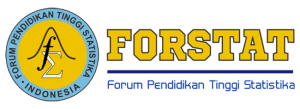Modeling the Stunting Prevalence Rate in Indonesia Using Multi-Predictor Truncated Spline Nonparametric Regression
DOI:
https://doi.org/10.34123/jurnalasks.v16i1.719Keywords:
Stunting, Prevalensi, Spline, Pemodelan NonparametrikAbstract
Introduction/Main Objectives: Stunting is the impaired growth and development that children experience from poor nutrition, repeated infection, and inadequate psychosocial stimulation. Background Problems: Based on data from the National Nutrition Status Survey (SSGI) in 2022, the prevalence of stunting in Indonesia was 21.6%, which is still above the WHO standard of below 20%. Novelty: This study was conducted with the aim of analysing the factors that influence the stunting prevalence rate in Indonesia using multi-predictor truncated spline nonparametric regression. Research Methods: The research data is secondary data taken from Health Statistics 2022 with response variables in the form of stunting prevalence. Finding Result: Based on the analysis, the best model to model the stunting prevalence rate is a multi-predictor truncated spline with three knots. In addition, it was found that four predictor variables which are the percentage of infants under 6 months old receiving exclusive breastfeeding, the average age of a mother's first pregnancy, the percentage of married women aged 15-49 using contraception, and the percentage of mothers who gave birth to a live child in the past two years and initiated early breastfeeding had a significant effect simultaneously and partially on the stunting prevalence rate in Indonesia.
Downloads
References
N. A. N. Djide, “Hubungan Intervensi Spesifik Dari Indikator Program Indonesia Sehat Dengan Pendekatan Keluarga (Pis-Pk) Dengan Prevalensi Stunting Di 10 Desa Lokus Program Pencegahan Stunting Di Kab. Banggai Tahun 2018-2019,” Universitas Hasanuddin, 2021.
L. Makripudin, D. A. Roswandi, and F. T. Tazir, Kebijakan Dan Strategi Percepatan Penurunan Stunting Di Indonesia. 2021.
Kemenkes RI, “Standar Antropometri Penilaian Status Gizi Anak,” Kementerian Kesehatan Republik Indonesia, vol. 95, no. 4. pp. 458–465, 2010.
Kemenkes RI, “Buletin Jendela Data dan Informasi Kesehatan: Situasi Balita Pendek (Stunting) di Indonesia,” Kementeri. Kesehat. RI, p. 20, 2018.
Bappenas, “Tentang SDGs.” https://sdgs.bappenas.go.id/tentang/.
Bappenas, “Tujuan SDGs Poin Kedua ‘Tanpa Kelaparan.’” https://sdgs.bappenas.go.id/tujuan-2/#:~:text=Tujuan SDGs nomor 2 yaitu,pangan dan penciptaan lapangan kerja.
A. Y. K. Kartini and L. Nur Ummah, “Pemodelan Kejadian Balita Stunting di Kabupaten Bojonegoro dengan Metode Geographically Weighted Regression dan Multivariate Adaptive Regression Splines,” J Stat. J. Ilm. Teor. dan Apl. Stat., vol. 15, no. 1, pp. 127–136, 2022, doi: 10.36456/jstat.vol15.no1.a5074.
M. Rifada, N. Chamidah, R. A. Ningrum, and L. Muniroh, “Stunting Determinants Among Toddlers in Probolinggo District of Indonesia Using Parametric and Nonparametric Ordinal Logistic Regression Models,” Commun. Math. Biol. Neurosci., vol. 2023, pp. 1–14, 2023, doi: 10.28919/cmbn/6690.
Irodah, “Hubungan Berat Badan Lahir Dan Pemberian Asi Eksklusif Dengan Kejadian Stunting Pada Balita Usia 12-59 Bulan Di Puskesmas Pegandon Kabupaten Kendal,” Universitas Muhammadiyah Semarang, 2018.
D. Widiantini, “Estimasi Model Regresi Nonparametrik Multivariat Berdasarkan Estimator Polinomial Lokal Orde Dua,” Universitas Airlangga, 2012.
I. . Budiantara, “Spline dalam Regresi Nonparametrik dan Semiparametrik: Sebuah Pemodelan Statistika Masa Kini dan Masa Mendatang,” ITS Press, 2017. .
W. W. Chin, “The Partial Least Squares Aproach to Structural Equation Modeling,” Mod. Methods Bus. Res., 1998.
H. Muryaninggar, “Pemodelan Angka Putus Sekolah Usia SMA di Indonesia dengan Pendekatan Regresi Nonparametrik Spline,” Institut Teknologi Sepuluh Nopember, 2017.
A. D. N. Yadika, K. N. Berawi, and S. H. Nasution, “Pengaruh stunting terhadap perkembangan kognitif dan prestasi belajar,” J. Major., vol. 8, no. 2, pp. 273–282, 2019.
















